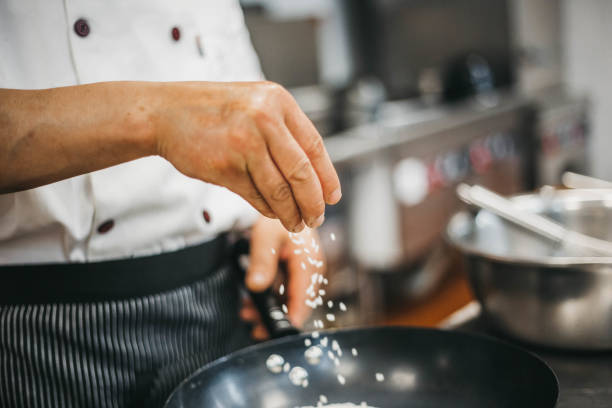Chinese Cuisine – A Culinary Art Beyond Time
Chinese cuisine stands among the world’s oldest and richest culinary traditions, spanning thousands of years and profoundly shaping global food culture. In China, food is not merely nourishment—it is a comprehensive art form reflecting deep history and vibrant culture. With its vast array of flavors and techniques, it forms an integral part of Chinese identity and has transcended national borders to become a cornerstone of the global culinary landscape. It is estimated that around 700,000 Chinese restaurants operate across more than 180 countries and regions, underscoring its global prominence.
The longevity and global spread of Chinese cuisine are not coincidental but rooted in a deeply ingrained culinary system. The evolution of culinary techniques through successive dynasties mirrors China’s historical transformations, while the country’s vast geography explains its striking regional diversity. Chinese cuisine thus goes beyond mere sustenance—to a living cultural artifact reflecting historical shifts, geographic differences, and societal values across millennia. Its global influence extends beyond taste; it exports a complex cultural system, demanding a multi-dimensional understanding beyond recipes. This article guides the reader through China’s culinary journey—from ancient origins to the mosaic of regional cuisines known today—focusing on its history, core ingredients, unique techniques, and major regional food cultures.
1. Roots of Chinese Cooking: From Prehistory to Empires
The culinary history of China dates back to the Neolithic Age, when early communities began cultivating crops and domesticating animals. With the development of agriculture, cooking methods evolved, leading to diverse dishes refined through the ages. Early evidence such as pottery shards and ancient cooking tools reveals the use of fire and rudimentary ovens for baking and roasting. The discovery of fermented foods was also pivotal in early Chinese diets, laying the foundation for enduring culinary traditions.
Significant culinary advancements occurred under successive dynasties. During the Han Dynasty (206 BCE–220 CE), culinary techniques expanded, introducing diverse spices and fermentation methods. Under the Tang (618–907) and Song (960–1279) dynasties, imperial kitchens employed skilled chefs who crafted elaborate dishes using exotic ingredients and advanced techniques. These periods also saw the emergence of distinct regional cuisines as China’s territory incorporated varied climates and cultures.
The Ming (1368–1644) and Qing (1644–1912) dynasties had further impact through cross-border influences. Under the Ming, modern Chinese cuisine flourished, while imperial court luxury during the Qing—such as daily three-course banquets—fostered culinary refinement and the rise of haute cuisine traditions.
From Neolithic cooking to imperial culinary sophistication, Chinese cuisine has been dynamic—continuously absorbing external elements through trade and conquest. Extravagant imperial banquets reveal that cuisine was a symbol of status, artistry, and cultural expression rather than mere sustenance.
Ancient texts also played a vital role in documenting culinary knowledge. The Book of Rites provides early insight into dietary customs and cooking methods. More critically, the Qi Min Yao Shu—authored during the Northern Wei period (386–534 CE)—contains over 100 cooking techniques and is the oldest known Chinese culinary manual. Its existence underscores a conscious effort to codify culinary knowledge, raise the status of chefs, and treat cooking as an intellectual specialty—foundations for a rich culinary tradition passed through generations.
2. Core Ingredients: The Heart of Chinese Cuisine
Chinese cuisine is grounded in a set of core staples, complemented by a rich variety of vegetables, spices, and sauces that create its distinctive flavors.
Rice, Noodles, and Tofu – Culinary Pillars
Rice: Central to Chinese meals, especially in southern regions. Used in dishes such as fried rice, congee, and steamed rice. Chinese rice varieties include long, medium, short, glutinous, wild, red, black (“forbidden” rice), and modern options like low‑carb konjac rice.
Noodles: A staple in northern China, where wheat is more common. Includes egg noodles, rice noodles, glass noodles. Prominent dishes include chǎo miàn and lāmiàn.
Tofu: Known as “plant cheese,” tofu is a valuable soy‑based protein source. It can be fried, steamed, added to soups or stir-fries, and is essential in vegetarian and meat‑replacement dishes.
This diversity reflects a cuisine that maximizes local resources and adapts to nutritional needs—modern variants like konjac rice show a long-standing tradition of evolving ingredients for health-conscious diets.
Vegetables, Spices, and Sauces – The Flavor Palette
Fresh vegetables—bok choy, Chinese mushrooms, sugar snap peas, Chinese broccoli—are crucial in adding flavor and nutrition. Key spices include Sichuan peppercorn and ginger. Essential sauces include light, dark, and sweet soy sauces, oyster sauce, and hoisin sauce. Light soy is used in cooking and noodles, dark soy for darker color and marinades, sweet soy or added sugar balances taste. The precise combination of these ingredients reflects classical Chinese philosophical balance and sensory harmony in flavor construction.
3. Culinary Artistry: Techniques Beyond Stir-Fry
Chinese cuisine excels in diverse cooking techniques centered on a single instrument: the wok.
The Wok’s Multifarious Uses
The wok—designed for high, focused heat over traditional Chinese stoves—is a culinary innovation allowing chefs to create a wide range of textures and flavors using one tool. Techniques include:
Stir‑frying, steaming, pan‑frying, deep‑frying, braising/stewing, boiling, searing, smoking, and dry roasting.
This versatility means a full meal can be prepared using a single vessel, reflecting a philosophy of efficiency and skill. The wok’s design and usage are central to Chinese cooking’s reputation for variety and speed.
“Wok Hei”: The Essence of the Wok
“Wok Hei”—literally “wok breath”—is a poetic term for the flavor and aroma imparted by high‑heat stir‑frying. Achieved through complex chemical reactions like caramelization and Maillard browning where oil overheats (above 200 °C). Particularly prized in Cantonese cuisine, Wok Hei reflects not ingredients alone but the chef’s mastery of heat and timing.
Emphasis on Freshness and Ingredient Preparation
Chinese cooking stresses freshness and uniform preparation. Ingredients are finely and evenly cut for quick, even cooking. Techniques include marinating meat in egg yolk for tenderness, blanching to remove bacteria, and corn‑starch slurry to gloss stir‑fried meats and fish. This attention to appearance, texture, and aroma underscores the sensory completeness of Chinese culinary art—food is as visually and texturally engaging as it is flavorful.
4. Eight Great Regional Cuisines — A Mosaic of Flavors
China’s geographic and cultural diversity gave rise to eight major culinary traditions, known as the “Eight Great Cuisines”: Shandong, Cantonese, Sichuan, Hunan, Fujian, Jiangsu, Zhejiang, and Anhui.
These cuisines reflect the interplay between climate, agriculture, natural resources, and regional cultural practices. For instance, the spicy heat of Sichuan cuisine suits the region’s humid climate, whereas Anhui cuisine favors mountain ingredients and river seafood. Despite clear distinctions, regional cuisines share core values: emphasis on freshness, balance, and mastery of heat.
Regional Summary
| Cuisine | Key Features | Signature Flavors | Famous Dishes |
|---|---|---|---|
| Shandong | Oldest, northern base, rich broths, fast stir‑fry | Salty, refined, some sweet trends | Sea cucumber with scallion, sweet‑sour carp, Peking duck |
| Cantonese | Fresh ingredients, delicate techniques (steam/stir‑fry), balanced aromas | Light, natural, mild | Roast goose, suckling pig, dim sum, clay‑pot rice |
| Sichuan | Bold, spicy, “mala” numbing, heavy pepper use | Spicy, numbing, sweet, sour, salty, bitter | Kung Pao chicken, Mapo tofu, twice‑cooked pork |
| Anhui | Mountain and river ingredients, slow‑cooking techniques | Savory, natural, nourishing | Stinky mandarin fish, fermented tofu, smoked duck |
These regional traditions represent deep-rooted culinary systems—not random variations—integrally tied to environmental and cultural identity.
5. Conclusion: A Culinary Legacy in Constant Evolution
Chinese cuisine remains a rich, dynamic legacy—an evolving dialogue between humanity, environment, and history. From Neolithic origins to imperial refinement and regional diversity, it continues to captivate the world with its depth and complexity.
This cuisine is a testament to human creativity: transforming basic staples into culinary art that reflects survival, adaptation, and aesthetic refinement. It remains a living cultural monument—ever evolving and rooted in Chinese heritage.








